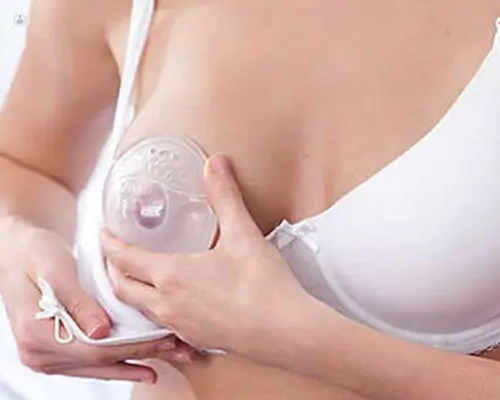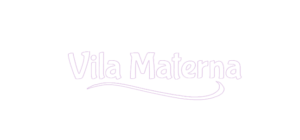So you’re pregnant and full of plans for breastfeeding, until… where’s your nipple?! In today’s guide, let’s talk about inverted nipples and what to do in these situations.

Inverted Nipples vs Flat Nipples
An inverted nipple is a condition where the nipple is turned inward instead of outward. This can be congenital or acquired and may affect one or both breasts. It is not the same as a “flat nipple,” which is a different type. In the latter, instead of being inverted, the nipple is simply “flat,” as if there is no protrusion.
Some women with inverted nipples may face challenges with breastfeeding, while others may not. Depending on the severity of the nipple inversion, it might be possible to address it with special exercises or, in more severe cases, surgery.
You are more likely to have inverted nipples if you:
- Have close relatives with inverted nipples
- Have very large or small nipples
- Have very firm or very soft skin in the nipple area
- Have very sensitive or painful nipples
- Have nipples that do not easily become erect
How do you fix an inverted nipple?

In some cases, inverted nipples can be fixed doing specific exercises or special techniques. Some treatments that may be helpful include nipple stretching exercises, using devices for nipple stretching, and surgical treatment in more severe cases. Here are some examples:
Nipple Stretching Exercises
These exercises can help elongate the nipple and make it more prominent. They can be performed using hands or with a device specially designed for this purpose.
Manual Nipple Stretching
- Gentle Massage: Use your fingers to gently massage the nipple and surrounding area in circular motions. This can help stimulate blood flow and promote tissue elasticity.
- Pinch and Roll: Gently pinch the base of the nipple between your thumb and forefinger. Roll the nipple between your fingers, applying a slight pulling motion. Repeat this motion for a few minutes each day.
Nipple Eversion Devices
Several devices are available in the market to elongate the nipple and make it more prominent. Examples include:
Nipple Extractors
These devices are specifically designed to pull the inverted nipple outward. They typically consist of a syringe-like mechanism that creates a gentle suction. Apply the extractor to the nipple, creating a vacuum, and maintain this for a short duration as recommended by a healthcare professional.
Nipple Suckers or Cups
These are devices that create suction around the nipple. Place the cup over the inverted nipple, creating a vacuum that gently pulls the nipple outward. Ensure that you follow the instructions provided with the specific device.
Breast Shells or Nipple Shields
- Breast Shells: These are discreet, dome-shaped devices worn inside the bra. They have a small opening that allows the inverted nipple to protrude naturally. Wearing breast shells regularly can help promote gradual elongation of the nipple.
Can pumping fix inverted nipples?
Breast pumping can be a helpful technique to address inverted nipples in some cases. The suction created by a breast pump may stimulate blood flow to the nipple area, gradually pulling out the inverted nipple. In fact, some breast pumps come with a specific mode designed to help with nipple eversion. This mode typically involves a gentler suction pattern to draw out the inverted nipple.
It’s important to note that methods efficiency vary from person to person. That’s because individual factors, such as the severity of the nipple inversion and the underlying cause, can influence the outcomes, which is why is so important to get professional help before trying.
Here are some general tips if you’re considering using a breast pump to address inverted nipples:
Consult with a Lactation Consultant or Healthcare Professional
Before starting any pumping regimen, it’s advisable to consult with a lactation consultant or healthcare professional. They can provide personalized advice based on your specific situation.
Choose a Pump with Nipple Eversion Mode
If possible, use a breast pump that has a specific mode designed for nipple eversion. This can provide a more targeted approach to addressing inverted nipples.
Start Gradually
Begin with shorter pumping sessions and gradually increase the duration as your nipples become accustomed to the suction. This can help minimize discomfort.
Consistency is Key
Consistency in pumping sessions is important for potential benefits. Regular and gentle pumping may contribute to positive changes over time.
Remember, while pumping may be beneficial for some individuals, it may not be the sole solution for everyone. It’s crucial to seek guidance from a healthcare professional for a comprehensive evaluation and personalized recommendations.
Can you breastfeed with Inverted Nipples?
Yes, it is entirely possible to breastfeed even if you have inverted nipples. However, it may be more challenging, and working with a qualified healthcare professional, such as a lactation consultant or a breastfeeding nurse, may be necessary to ensure that the child can latch effectively and to prevent pain or discomfort for the mother.
3 Things to Avoid While Breastfeeding with Inverted Nipples
If you’re attempting to breastfeed with inverted nipples, here are some things to avoid:
Don’t forcefully pull the nipple out
Pulling the nipple forcefully can damage it and make it even more painful. Instead, try gently massaging the nipple or using a nipple extractor to help make it more prominent.
Don’t use creams or ointments without medical guidance
Some creams or ointments may damage nipple tissue or interfere with breastfeeding. Before using any product, consult with a qualified healthcare professional for guidance.
Avoid using bottle nipples or pacifiers for breastfeeding
Using bottle nipples and pacifiers for breastfeeding can confuse the child and make it more challenging for them to learn to latch correctly. Additionally, excessive use of bottle nipples or pacifiers can lead to breastfeeding issues later on.
Tips for Breastfeeding with Inverted Nipples
Get Support from a Qualified Professional
A lactation consultant or breastfeeding nurse can help ensure that the baby latches effectively and prevent pain or discomfort for the mother. They can provide guidance on techniques and specific adaptations tailored to your case.
Massage the Nipple Before Breastfeeding
Massaging the nipple before breastfeeding can make it more pliable, protruding, and easier for the baby to latch onto correctly.
Use a Proper Lubricating Cream
Applying a specifically designed lubricating cream to the nipple can make breastfeeding easier and less painful. Note: not just any lubricant. Consult with your doctor or breastfeeding consultant to determine the appropriate lubricant for breastfeeding!
Position the Baby Correctly
It’s crucial for the baby to be well-positioned during breastfeeding to facilitate a good latch and prevent pain or discomfort for the mother. This includes ensuring that the baby is aligned with the breast and that their nose is aligned with the nipple, allowing them to breathe easily while nursing.
Use a Nipple Corrector
A nipple corrector is a device that helps press the nipple outward while it’s being stretched. This can be useful in making the nipple more prominent and easier for the baby to grasp. It functions somewhat like a breast pump: using vacuum pressure, the nipple corrector helps the nipple form outward.
Don’t Give Up!
Breastfeeding with inverted nipples may be challenging initially, but with time and practice, many mothers successfully breastfeed. If you’re facing difficulties, don’t give up; seek professional support to receive guidance and the help you need to breastfeed your baby.
Remember that breastfeeding should not be painful and is the healthiest option for both the mother and the baby.

